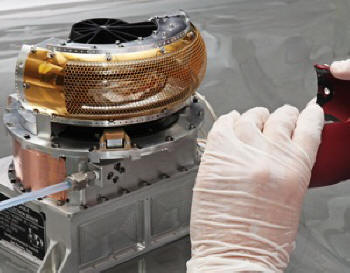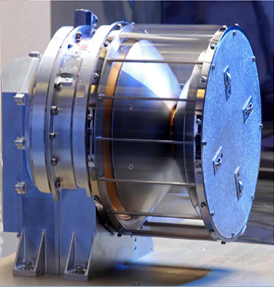Juno
The goal of the Juno mission is to investigate the origin, interior structure, atmospheric composition, atmospheric dynamics, and polar magnetosphere of Jupiter. Juno launched in August 2011 and was inserted into orbit around Jupiter on July 4, 2016. Juno will make maps of the gravity, atmospheric composition, and magnetic field of Jupiter, as well as image the aurora and determine the plasma processes responsible for the aurora. First-time images of the polar region of Jupiter will be captured, and the new technique of passive microwave sounding will be used to study the deep atmospheric regions of Jupiter Ultimately, Juno will provide insight into the formation of Jupiter and so the origins of our solar system. SwRI has been heavily involved with the Juno mission, contributing the four-instrument Jovian Auroral Distributions Experiment (JADE) suite and the Ultraviolet Imaging Spectrograph (UVS).

JADE-E
JADE-E (Jovian Auroral Distributions Experiment – Electrons) will make detailed measurements of the electron energy and pitch angle distributions over the poles of Jupiter.JADE-E is a suite of 3 identical sensors set 120° apart from each other on the Juno spacecraft. Since Jupiter’s polar magnetosphere has yet to be explored, debated theories on the intense aurora, moon-ionosphere interactions, energy and mass transport, and magnetic reconnection at Jupiter are only loosely constrained by remote observations and measurements by the Galileo spacecraft. Electron measurements from JADE-E aim to further our understanding of the current theories and will likely prompt new discussions on how this large, rapidly-rotating planet and its plasma environment are fundamentally different than the Earth and the terrestrial magnetosphere.

JADE-I
JADE-I (Jovian Auroral Distribution Experiment – Ions) on-board Juno is designed to measure 3D ion distributions in the Jovian magnetosphere. JADE-I consists of an electrostatic analyzer with a time-of-flight analyzer that can separate ions with different mass-per-charge ratios. Unlike Earth, the major ions at Jupiter are oxygen and sulfur ions originating from the volcanic moon, Io. JADE-I will provide the first measurements of these ions in the polar region of Jupiter as well as the first direct measurements of ions precipitating from Jupiter’s magnetosphere into the atmosphere that produces the stunning aurora.


